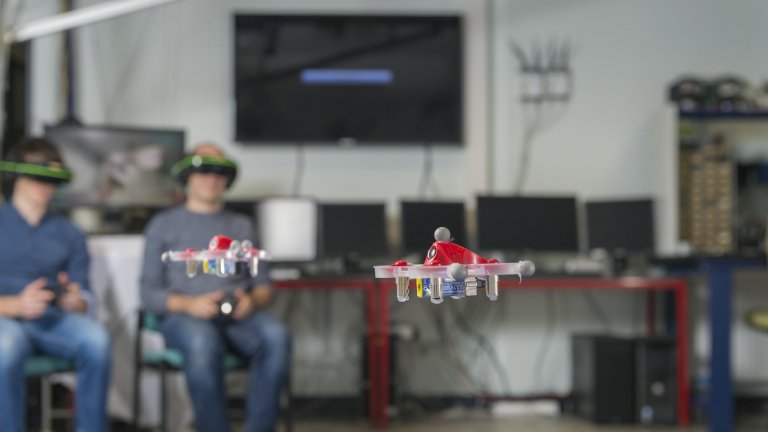
© Cyril Frésillon / GIPSA-lab / CNRS Images
View the mediaScientific news
For its second participation in VivaTech - the European global tech gathering to be held between 16 and 19 June 2021 in Paris - the CNRS will present a wide sample of its Deeptech know-how!

© Cyril Frésillon / GIPSA-lab / CNRS Images
View the mediaFrom biotechs and greentechs to quantum technologies and sport, scientists and start-ups from CNRS laboratories and its partners will present the technologies of the future.
This year the CNRS will honour quantum technologies and hydrogen in particular. At VivaTech you will discover the most recent achievements in quantum processors and hydrogen fuel cells. Prometheus, Quandela's unique photon generator, C12 Quantum Electronics' carbon nanotubes, or Atlas, one of H2sys' hydrogen electric generators and one of H2Pulse's test beds for companies looking to make the transition to hydrogen. Discover also the robotic hand of the Robioss team.
This news is an opportunity to show you photo and video reports on the nine start-ups present at the CNRS booth, during the first participation in Vivatech, in May 2019 : Tiamat, ThrustMe, Curve One, Greenerwave, Mercurio, Sensome, Daumet, Bio Inspir’ et Drone Interactive. You'll discover AntBot, the first legged robot able to move without GPS, designed by researchers from CNRS and the University of Aix-Marseille.
With over 1,500 start-ups from laboratories under its supervisory authority, the CNRS is among the major actors in Deeptech in France. A typical profile of these start-ups is a company that, in its third year of existence, employs twenty people and generates revenues of 3 million euros across all scientific domains.
Our work is guided by the way scientists question the world around them and we translate their research into images to help people to understand the world better and to awaken their curiosity and wonderment.